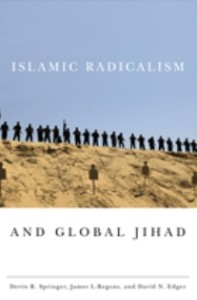|
Reviewed by Lorenzo Vidino, Senior Fellow and Lecturer at the Fletcher School of Law and Diplomacy at Tufts University Over the last few years, Brynjar Lia, Thomas Hegghammer, and a handful of other scholars, have analyzed the growth of a genre of literature that has come to be known as “jihadi strategic studies.” The field comprises the collection of the ever-growing body of writings from prominent jihadist thinkers that critically analyze tactics and strategic postures the global jihadist movement could adopt. Contrary to the perception of many, in fact, large sections of the global jihadist movement are not irrational actors operating at random. Largely unbeknownst to most Western scholars and policymakers, jihadist leaders such as Abdullah Azzam, Ayman al Zawahiri and the less well known but comparatively influential Abu Musab al Suri, Yusuf al Ayiri, and Abdul Aziz al Muqrin, have written extensive essays on subjects ranging from combat tactics to long-term strategic planning, providing invaluable direct insights into the movement. The study by Devin Springer, James Regens, two academics at the University of Oklahoma, and David Edger, a former CIA operative, could be a much needed addition to the analysis of this still widely obscure genre, seeking to survey—after a necessary introduction to its philosophical underpinnings—the global jihadist movement’s tactics and strategies. Yet, despite the authors’ good intentions, their aim falls partially short. Islamic Radicalism and Global Jihad is not without merits. The authors clearly understand the nature of the phenomenon and they neither underrate nor overestimate it. The book’s basic structure is clear, schematically devoting individual chapters to different aspects. And some chapters, particularly toward the end, are quite interesting and well done. Yet, unfortunately, the flaws tend to overshadow the positive aspects. The book’s most evident weaknesses are, arguably, its inelegant writing style and its minor but widespread inaccuracies. The second flaw is particularly grave for a scholarly work. The numerous stylistic errors—ranging from constant terminological imprecision to a lack of supporting material—confuse the message the authors’ seek to convey. Imprecise language usage is a continual problem throughout the text. The terms “Islamist” and “jihadist,” for example, are often used interchangeably. The Palestinian raid against the Israeli team during the 1972 Munich Olympics is dubbed as “Islamic terrorism” and lumped with the actions of al Qaeda, despite the secular nature of its perpetrators (p. 3). Some sentences are difficult to decipher. What does: “While all jihadists share a belief that an Islamic society is the goal, religious fundamentalists who become sufficiently radicalized become jihadists to transform their belief into reality” mean (p. 210)? Perhaps the first “jihadists” should have been “Islamists,” but here, as throughout the rest of the book, terminological imprecision detracts credibility from the authors’ work. At points, the authors make claims that they fail to substantiate. While this may seem innocuous, readers are left, nonetheless, with misleading or inaccurate views. For instance, the authors claim that, in response to the GIA’s attacks against French citizens in Algeria in the early 1990s, “the French government responded by cracking down on the large Algerian population inside France” (p. 22). Provided with no details over this strong statement, an uninformed reader is to assume massive and indiscriminate purges against the millions of Algerians living in France (something that, of course, never happened). While stylistic errors can at times be disregarded, the factual inaccuracies in Islamic Radicalism and Global Jihad mar the whole book. The authors seem to be quite unfamiliar, in particular, with the history of the Muslim Brotherhood. They claim, for example, that Brotherhood founder Hassan al Banna attributed all the problems of the Arab world to “Arab nationalism” (p. 31). In reality, having been killed three years before Nasser’s coup d’état, al Banna had little against an ideology that had only limited influence in then-British-occupied Egypt (his followers, of course, will). The authors’ assertion that the Brotherhood “immediately denounced” Sayyid Qutb’s Milestones for its incendiary tones is also factually incorrect (p. 34). Finally, Qutb was executed in 1966, not 1967, as the authors claim (p. 11). The authors appear to be more comfortable in the second part of the book, where they describe tactics. Despite the frequent repetitions (some facts are explained repeatedly throughout the book, probably a consequence of the multiplicity of authors), these chapters are significantly better written. Yet, they do little to advance the scholarship in the field. The original sources analyzed (quite well, it must be said), are all English translations of well known essays of jihadist theoreticians translated and widely diffused by Western institutions such as the West Point Combating Terrorism Center. Unfortunately, very few new texts and Arabic sources are mentioned, making this book a redundancy in the practitioner’s library. Its ability to serve as a good primer for laypeople is hampered by style and editing problems. This is regrettable as the authors’ understanding of the tactics and strategies of the global jihadist movement lays a strong foundation for a book that could have achieved both these goals. |


 Islamic Radicalism and Global Jihad
Islamic Radicalism and Global Jihad